
Entry 17 - 6 September 2000


 Entry 17 - 6 September 2000 |
 |
 |
|
| PREVIOUS | INDEX | NEXT | CONTACT US | ||
| Yellowstone National Park to Teton Village (Jackson Hole) |
||
| Chris |  For once we had a good night's sleep as we could open the window and let fresh air in during the night. It was quiet too, with no sound from a noisy air conditioner or fan. The surrounding area was also generally quiet (we were away from the restaurant), so there were no rude awakenings either.
For once we had a good night's sleep as we could open the window and let fresh air in during the night. It was quiet too, with no sound from a noisy air conditioner or fan. The surrounding area was also generally quiet (we were away from the restaurant), so there were no rude awakenings either.
|
|
| Vanessa | It was a nice room. I really appreciated the fresh air and wished that more motels would allow you to open the window - even a crack makes a difference! The restaurant attached to the Gran Tree was quite good, too. We had our breakfast there (Chris had bacon while I tried the local sausages) and we were interested to hear the locals talking. It had actually rained during the night and they were very happy about it. They needed lots more, but it was a start. Actually, the day was rather cool and overcast already. It seemed that they might get the rain they needed. | |
| We didn't stay in Bozeman long, but I quickly got the impression that antler art and taxidermy are big business in the area. Hunting must be a popular past time. | ||
| South of Bozeman are more mountains. These had snow on them, but they were nowhere near as impressive as the Columbia Icefields. The hills were very dry and looked over grazed. Erosion could be a big problem in this area if the locals aren't careful. | ||
| Today we were headed towards Yellowstone National Park. This is a place I had heard about since I was a child and I was really looking forward to seeing it and, to tell the truth, I was somewhat nervous as well. Having grown up in such a geologically stable environment as Brisbane, the idea of walking about on a caldera where the earth's crust was so thin was a little...disturbing. But the prospect of seeing geysers and boiling mud pools fascinated me. | ||
| The first hint of thermal activity we saw was when we were travelling south along the highway (Route 89) through the Yellowstone Valley. The air was rather cool and heavy grey clouds were lowering on the mountains. The road wound along the valley floor, following the Yellowstone River. We had been passing by a number of horse ranches (one ranch had bison) when we saw an interesting multi-coloured streak on one of the hillsides and we stopped to look at it. An information board told us that it was called "The Devil's Slide ". It also mentioned something about hot springs... The river was just below us and Chris pointed to a nearby area of its bank that was steaming! | ||
| Along the roadside was also a sign advertising Chico Hot Springs. We were definitely getting closer! I was beginning to get excited. I think Chris was, too. In all his previous trips to the USA, he'd never been to Yellowstone, so this was all new to him as well. | ||
| Chris | 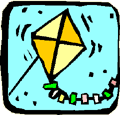 We stopped in Gardiner, just outside the north entrance to Yellowstone National Park. The closer you approached the park entrance the more tourist oriented places could be found. In one shop there were lots of beautiful artwork, including paintings, woodwork and hand-made kites shaped like various birds such as eagles and ospreys. With no space for these items and no money to afford them, we had to settle for browsing.
We stopped in Gardiner, just outside the north entrance to Yellowstone National Park. The closer you approached the park entrance the more tourist oriented places could be found. In one shop there were lots of beautiful artwork, including paintings, woodwork and hand-made kites shaped like various birds such as eagles and ospreys. With no space for these items and no money to afford them, we had to settle for browsing.
|
|
| The park entrance was 3,040 miles into our trip. After paying the entrance fee, we drove off noting that the speed limits in the park were 25 to 35 mph. Not far into the park we crossed the 45th parallel and entered Wyoming. | ||
| We drove up a set of hills via some switchback roads, passing some mule deer grazing on the very barren looking slopes. The Minerva Terrace at Mammoth Hot Springs was our first stop and our first indication of the true nature of the day's weather. It was cold with a stiff breeze blowing. We were not dressed for these conditions and it seems that most people who entered from the north were similarly affected. As the day progressed, we were able to tell which tourists came from the north and those who came from other directions. | ||
| Minerva Terrace itself was a bizarre, amazing site. The landscape was weird from the constant hot spring flows. The air was pungent with sulphur fumes - the classic "rotten eggs" smell. According signs and information brochures, the water was highly acidic. No soothing hot water dips here. The minerals within the water formed deposits to make the terraces. As the deposits grew, they altered the flow of the water down the slope, which in turn would gradually create more terraces. Sometimes the terraces would collapse and there would be a mud flow. We could see the remains of an old board walk that had been buried in such a flow. | ||
| As we drove deeper into the park, we could see large areas that had been burnt out in bush fires. We had known from the news on TV that it was a bad season for fires across a number of states, including Montana and Wyoming. | ||
| Our first close view of a bison was frustrating. It was grazing on the other side of the road, so we pulled over into a siding on our side to take photos from the car. As I was closest to it, I got the camera and waited for the bison to lift its head. And waited. And waited. In this time, other cars pulled up or slowed down for a look. Eventually, I took the best shot I could get and we moved on again. | ||
| By now, the rain had set in. As we did not want to miss any photo opportunities, Vanessa cradled both cameras in her lap. | ||
| Vanessa | 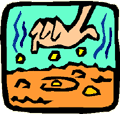 The road followed beside a creek, I think it was Obsidian Creek, for a while. The banks and creek bed was overgrown with lush green grass. In places, the water steamed lightly in the cold air. We saw our second bison near the creek, but we couldn't get a photo of it. Further on, the creek widened out and moved away from the roadside. I could see large billowing clouds of steam above the water through the trees. Near a picnic area, there were danger signs, warning people not to walk off the paths and to stay in the designated "safe" areas.
The road followed beside a creek, I think it was Obsidian Creek, for a while. The banks and creek bed was overgrown with lush green grass. In places, the water steamed lightly in the cold air. We saw our second bison near the creek, but we couldn't get a photo of it. Further on, the creek widened out and moved away from the roadside. I could see large billowing clouds of steam above the water through the trees. Near a picnic area, there were danger signs, warning people not to walk off the paths and to stay in the designated "safe" areas.
|
|
| The next major feature we came to was Roaring Mountain. It wasn't an entire mountain and it didn't roar, but it was a very large, impressive area of mountainside that was steaming white earth and rock. In places, the ground is too hot or acid for plants to grow. As the thermal area spread over time, it had killed a number of trees. Only their trunks remain, black against the pale grey/white slopes. It was a very desolate landscape. | ||
| Further along, the road wound along the mountainside and I had a good view of an entire valley that seemed to be steaming. It looked like bushfire smoke, but it was purely thermal activity. This view was looking towards Norris, which was to be our next stop. | ||
| Chris | There were steaming creeks, ponds and lakes everywhere. Each time we got out of the car, we could smell the sulphur - "rotten eggs" - in the air. We stopped at Norris, which is a huge area with lots of walks, but it was now too cold and wet for us to even contemplate any of these walks. At this time, even our short exposures to the elements required some serious thawing out afterwards in the heated warmth of the car. I did venture out a short distance from the tourist centre building to see a field of steam and some evidence of a geyser. | |
| Vanessa | We did have some pullovers on, but they were only lightweight and the wind cut right through them. Our warmer gear was well and truly packed away and it would have taken too much time and effort to dig them out and change. Even though it was a little disappointing, we talked it over and agreed that as there was so much to see, a lot of brief trips would be a better use of our limited time in the park than one or two long walks. We would suffer the cold. At least our umbrella was handy. | |
| Chris | Moving on we saw an elk lying under some trees and more mule deer grazing near the road. One of the deer had a radio collar on it. At this stage we were driving near the Gibbon River. We crossed over a steaming bridge and looked back upon the Gibbon Falls. | |
| As we moved into the Lower Geyser Basin, we saw a herd of bison. They were grazing in the fields of dry grass by the side of the road. Parts of the field was thermally active and the bison at times were shrouded in clouds of the ever-present steam. | ||
 Our next stop was the Fountain Paint Pot. Once again we risked the freezing elements. In the car park before we went to see the sights, was something that was most unusual to us. There was a lady walking her cat, Bennet, on a leash. We were amazed and delighted by this for several reasons. Firstly, I couldn't imagine taking a cat on holidays. Our cat, Crystal, was in the cattery for our vacation - not that he could have come with us anyway! I also couldn't believe that a cat was allowed in the National Park. In Australia, there are strict rules about pets in National Parks. In fact, I believe they're not allowed at all. Finally, much of our delight came from just seeing a cat, since we were missing the company of ours a lot.
Our next stop was the Fountain Paint Pot. Once again we risked the freezing elements. In the car park before we went to see the sights, was something that was most unusual to us. There was a lady walking her cat, Bennet, on a leash. We were amazed and delighted by this for several reasons. Firstly, I couldn't imagine taking a cat on holidays. Our cat, Crystal, was in the cattery for our vacation - not that he could have come with us anyway! I also couldn't believe that a cat was allowed in the National Park. In Australia, there are strict rules about pets in National Parks. In fact, I believe they're not allowed at all. Finally, much of our delight came from just seeing a cat, since we were missing the company of ours a lot.
|
||
| The Fountain Paint Pot consists of a number of features including mudpots, fumaroles, geysers and steaming ground. We walked along the winding path to take our photos. The weather was so poor that we feared that most of our photos would not turn out. The dull grey sky blended with the steam and greyish landscape. The sights were amazing. A gurgling mudpot had bubbles erupting through it continuously. These explosions were caused by gases of steam, carbon dioxide and hydrogen sulphide bursting through the viscous mud. We saw part of a small geyser eruption while we were there. At first I wondered if it was just another highly active steam vent, until I got closer and saw the spray of water into the air. | ||
| By the time we completed our small tour of the Fountain Paint Pot, we were shivering badly. More thaw time in the car. | ||
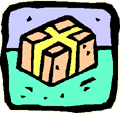 We drove on towards Old Faithful, stopping once for a herd of bison crossing the road. As we drove into the car park, we could just see through the trees that Old Faithful was going off. The next eruption was due in a little over an hour, so we took the opportunity to grab some lunch and do some shopping in the gift shop. During this waiting time, the sun was shining beautifully and it was pleasantly comfortable outside. As the time grew closer to the next eruption, the weather turned foul again, with freezing winds and rain. As we watched the geyser erupt, the plume of water was being blown almost horizontal. I held the umbrella, trying to shelter both of us as Vanessa took some photos. The eruption lasted for perhaps a few minutes, but the exposure to the weather was enough to freeze us again. Back to the car for some more thaw time.
We drove on towards Old Faithful, stopping once for a herd of bison crossing the road. As we drove into the car park, we could just see through the trees that Old Faithful was going off. The next eruption was due in a little over an hour, so we took the opportunity to grab some lunch and do some shopping in the gift shop. During this waiting time, the sun was shining beautifully and it was pleasantly comfortable outside. As the time grew closer to the next eruption, the weather turned foul again, with freezing winds and rain. As we watched the geyser erupt, the plume of water was being blown almost horizontal. I held the umbrella, trying to shelter both of us as Vanessa took some photos. The eruption lasted for perhaps a few minutes, but the exposure to the weather was enough to freeze us again. Back to the car for some more thaw time.
|
||
| It was getting late in the afternoon now and, as we had to reach Teton Village in Jackson Hole for our accommodation, we had to press on. We crossed the continental divide at Craig Pass at an elevation of 8262ft. Once again we were amazed, as it was now lightly snowing in the pass, although most was melting upon impact with the ground. Vanessa mentioned that this was the first time she has ever seen it actually snowing. We reached 8391ft by the other end of the continental divide, and although it was still snowing, it was turning more towards sleet. | ||
| It wasn't until much later that I realised that we were labouring and panting a lot while we were out walking. My first thought was it was because of the cold, but now I realise it was because of the elevation. In some places, we were two to three kilometres above sea level. As we live near sea level, we weren't conditioned to the altitude change. | ||
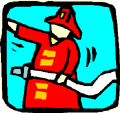 Vanessa took a photo of a 500ft wide gorge near the south exit of the park. Fire had jumped it in the 1988 bush fires. A huge portion of the park we had driven through this day has been devastated by forest fires, some more recent than others. However, there was lots of new growth coming through to replace the burnt areas, which was encouraging to see.
Vanessa took a photo of a 500ft wide gorge near the south exit of the park. Fire had jumped it in the 1988 bush fires. A huge portion of the park we had driven through this day has been devastated by forest fires, some more recent than others. However, there was lots of new growth coming through to replace the burnt areas, which was encouraging to see.
|
||
| We left Yellowstone and entered the Grand Teton National Park at 5:30pm. This park has also been devastated in places by fire. We took photos of Jackson lake, with the mountains on the other side still burning with a bush fire. | ||
| Continuing south, we drove through some very pretty countryside, with a range of mountains (the Teton Range) on our right. At one of our stops, we saw a crowd of people with binoculars watching something on the river in the distance. I could see some movement in the water and I took some photos with the zoom lens - however the creatures were still specks in the distance. I think they were river otter or beaver. | ||
| Further south, closer to the mountains, there was a mix of sunlight and smoke that produced some wonderful colour combinations in the sky. Occasionally, it was possible to see beams of light piercing through the clouds onto the mountains and plains below. | ||
| We missed our turn off to Teton Village, the location of the Best Western hotel where we were to stay the night, and we ended up in Jackson, a very tourist oriented town. Fortunately, there was a policemen directing traffic, so we asked him for directions. It seems we had missed our turn off by miles, however there was another route we could take on the other side of Jackson that would get us back there. I was relieved that the drive wasn't too long, as I was getting quite tired by this time. As we crossed over a small river, I happened to glance into the water and saw a river otter. | ||
| Teton Village is a cluster of hotels at the base of a huge mountain. It's a ski resort, with numerous lifts to the slopes. Our first stop was at the wrong hotel, as the Best Western guide had the wrong picture in it. It was a very posh looking hotel and we were suspicious it didn't have the Best Western sign on it. Our suspicions were confirmed when the person at the desk politely pointed us in the right direction. | ||
| The correct hotel was like a ski chalet. Our room had a mezzanine floor with a queen bed and desk there. We also had two queen beds on the lower floor, giving us three in total. It was a good way to have as many beds as possible in the room for a busy ski season. We chose not to use the mezzanine area. | ||
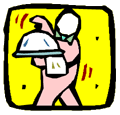 We had arrived in Teton Village around sundown, so by the time we had unpacked and cleaned up, our dinner in the hotel's Italian restaurant was quite late. I ordered shrimp pasta, while Vanessa had chicken parmesan. I think the salad that was served before the main meal would have been enough as we were both not hungry and very tired.
We had arrived in Teton Village around sundown, so by the time we had unpacked and cleaned up, our dinner in the hotel's Italian restaurant was quite late. I ordered shrimp pasta, while Vanessa had chicken parmesan. I think the salad that was served before the main meal would have been enough as we were both not hungry and very tired.
|
||
| Back in our room, we watched an episode of "Witch Blade" before retiring for the night. |
| PREVIOUS | INDEX | NEXT |